Ramses: From the Jungle to Solitude - The Dangers of Having Monkeys as Pets.
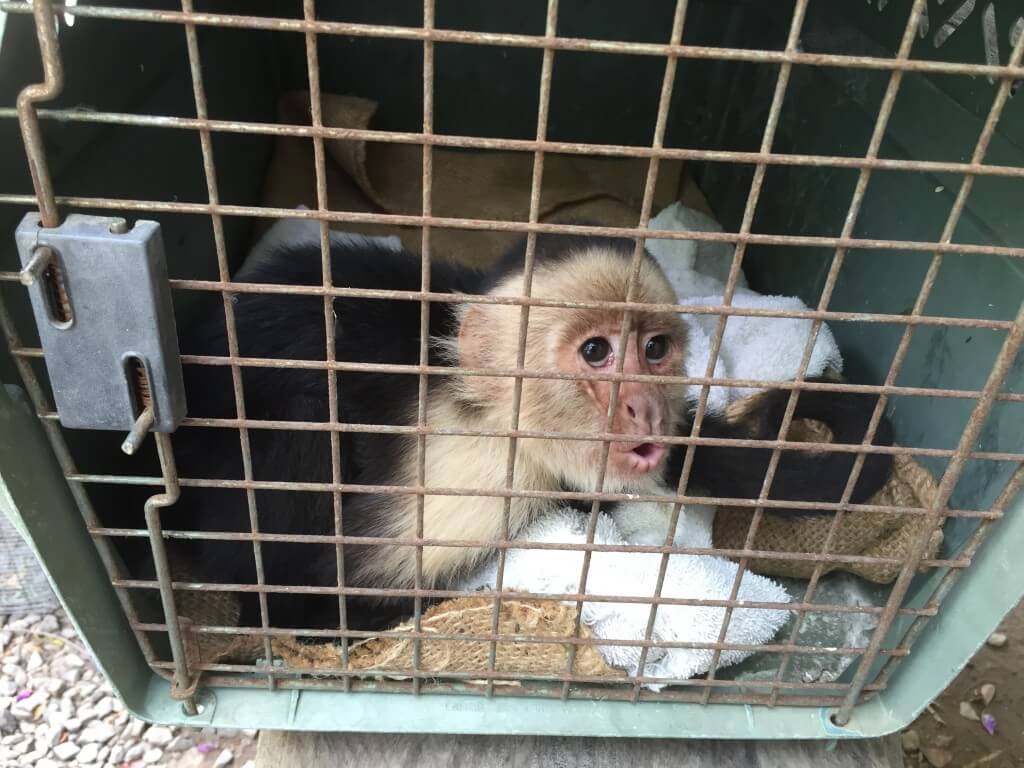
In the heart of Guanacaste province, a story of bravery and survival emerges in the figure of the white-faced capuchin monkey known as Ramsés (Cebus capucinus). Coming from the lush Costa Rican land, Ramsés symbolized the fight for wildlife preservation in the Natuwa sanctuary.
It all started with an urgent call, an echo of help launched by officials from the Ministry of Environment and Energy (MINAE). The whisper of leaves in Guanacaste concealed a sad story: Ramsés had been confiscated from the hands of women who kept him captive.
A being that should have run free among the trees was trapped in the illusion of being a toy, a human companion. But Costa Rica, with its commitment to biodiversity, does not allow such exploitation, as its wildlife law dictates.
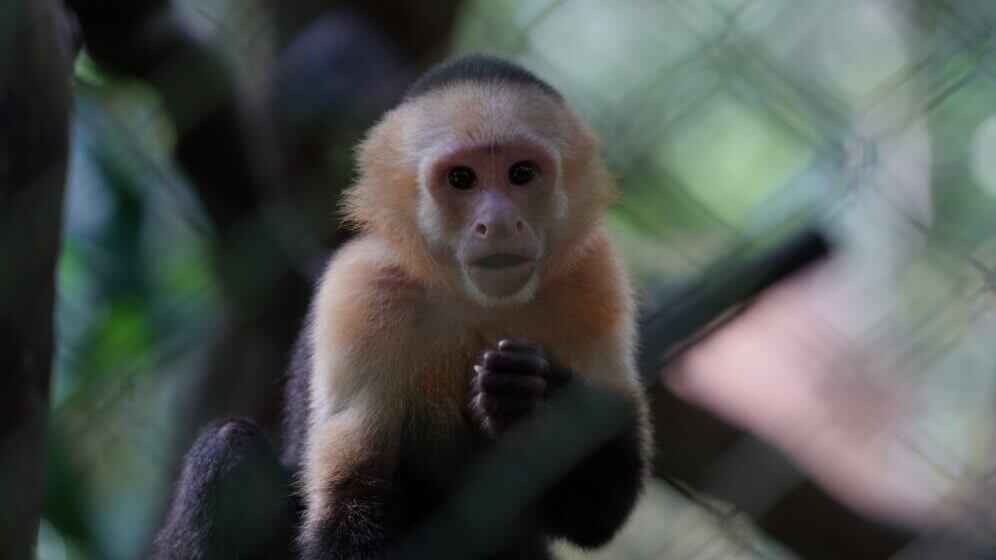




However, the story took an unexpected turn. The box that arrived at Natuwa housed Ramsés and an echo of freedom in the form of a yellow-naped Amazon parrot. Information that the officials themselves were unaware of at the time of the seizure.
Ramses, a white-faced capuchin monkey, carried the sadness of a double separation in her eyes. First, she was cruelly snatched from her mother by unscrupulous hunters, an unfortunate fate shared by many offspring in her position. Then, expelled from her second family, the human one, she suffered from imposed loneliness.
She arrived at Natuwa with her emaciated body, her vitality fading due to a diet devoid of necessary nutrients. Her spacious and comfortable enclosure became her home in the sanctuary, shared with a marmoset monkey. Visitors to Natuwa witness the unique bond between these species, a connection that, while not replacing their nature, offers some companionship amid distance.
The ecological regeneration of Natuwa, its habitat reconstituted through planting trees and vegetation, has attracted other white-faced capuchin monkeys from the area. From her confinement, Ramses can observe her compatriots in their natural life, a spark of camaraderie from a distance.
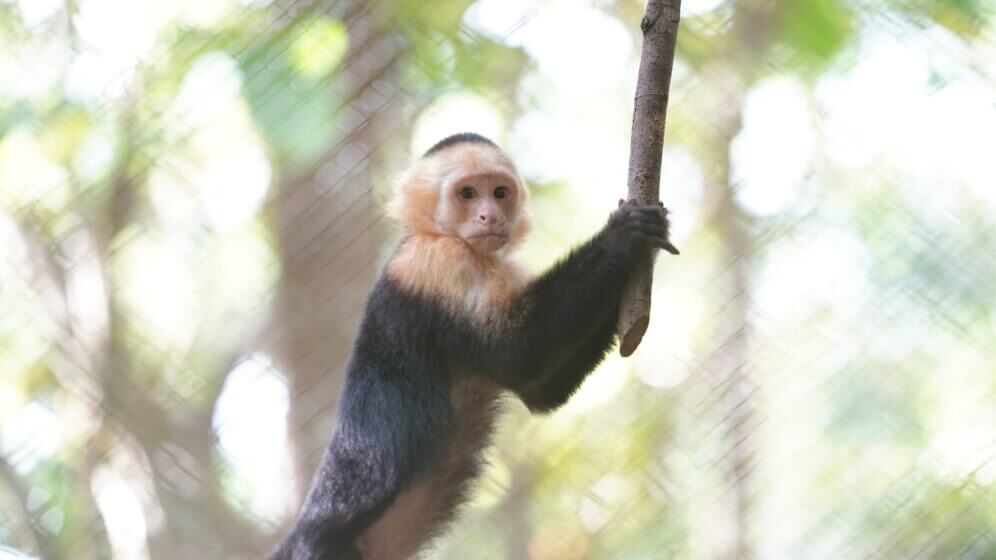







Can Ramses be released?
However, the possibility of releasing Ramses is a dilemma. Changes in his behavior due to his interaction with humans have altered his ability to survive in the jungle. Reintroduction could lead him to depend on non-natural food sources, endangering his existence and the surrounding ecosystem. Thus, Ramses remains a symbol of the complexity of conservation efforts, a reminder that sometimes, human love and care can impose irreversible limitations.
At the Natuwa sanctuary, Ramses is a white-faced monkey and a living testimony of the shared responsibility to protect and preserve the wonderful biodiversity surrounding us. His story is a constant echo that the fight for nature is a task that must be embraced by all of us so that, one day, stories like his can have a different ending.
A Remarkable Improvement: The Renaissance of Ramses in His New Home.
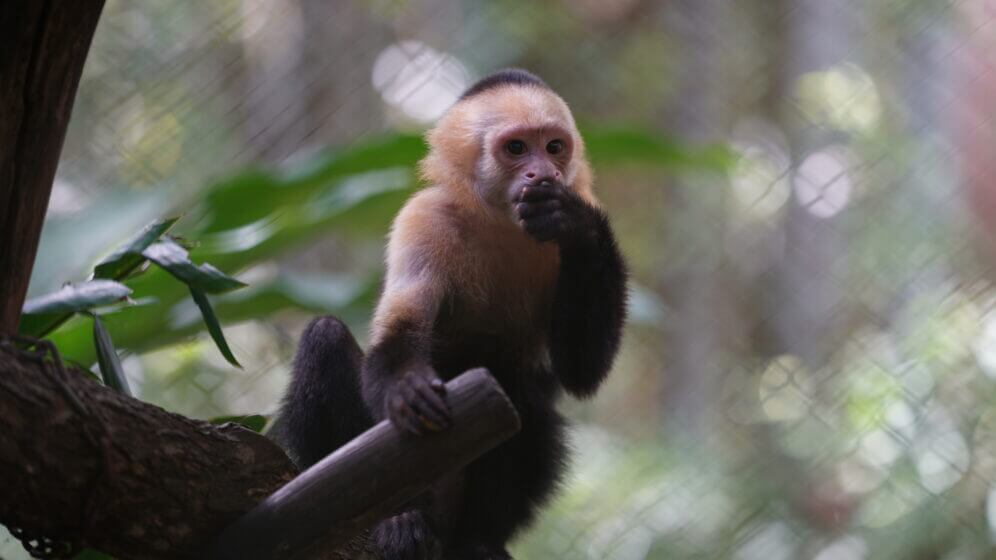


It would be relevant to highlight that, despite his current confinement situation, Ramses has experienced a remarkable improvement in his quality of life. Since arriving at the sanctuary, Ramses has achieved a significant weight gain, and his cage has been replaced with a much more spacious and suitable enclosure for his needs.
In contrast to his past, where he was confined in a cage intended for the transportation of dogs, his current environment reflects a noticeable improvement in his well-being. This transformation is visually appreciable, as shown in the above photograph.
Ramses: From the Jungle to Solitude - The Dangers of Keeping Monkeys as Pets.



In the heart of Guanacaste province, a story of bravery and survival emerges in the form of a white-faced capuchin monkey known as Ramsés (Cebus capucinus).
Originating from Costa Rica’s lush land, Ramsés symbolized the fight for wildlife preservation at the Natuwa sanctuary.
It all started with an urgent call, a plea for help from officials at the Ministry of Environment and Energy (MINAE).
The gentle rustling of leaves in Guanacaste concealed a sad story: Ramsés had been confiscated from the hands of some women who kept him captive.
A being that should have run free in the trees was trapped in the illusion of being a toy, a human companion. But Costa Rica, with its commitment to biodiversity, does not allow such exploitation, as dictated by its wildlife law.





However, the story took an unexpected turn. The box that arrived at Natuwa housed Ramsés and an echo of freedom in the form of an Auripon parrot. Information that the same officials were unaware of at the time of the seizure.
Ramses, a white-faced Capuchin monkey, carried the sadness of a double separation in her eyes.
First, she was cruelly torn from her mother by unscrupulous hunters, an unfortunate fate shared by many infants in her position. Then, banished from her second family, the human, she suffered from imposed solitude.
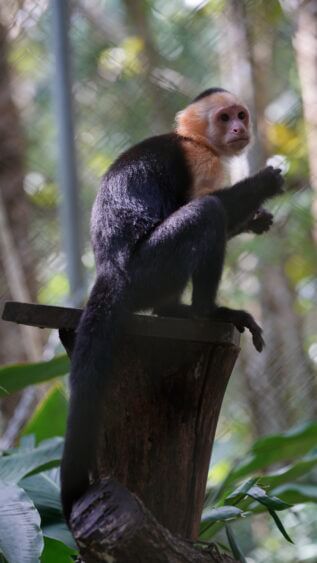

She arrived at Natuwa with his skeletal body; her vitality faded because of a diet devoid of necessary nutrients. Her spacious and comfortable enclosure became his home at the sanctuary, shared with a marmoset monkey.
Visitors to Natuwa witness the unique bond between these species, a connection that, while not replacing their nature, offers some companionship amidst the distance.
The ecological regeneration of Natuwa, its habitat reconstituted through tree and vegetation planting, has attracted other white-tailed deer from the area. From her seclusion, Ramses can observe his compatriots in their natural life, a glimmer of camaraderie from afar.



Can Ramses live in freedom?
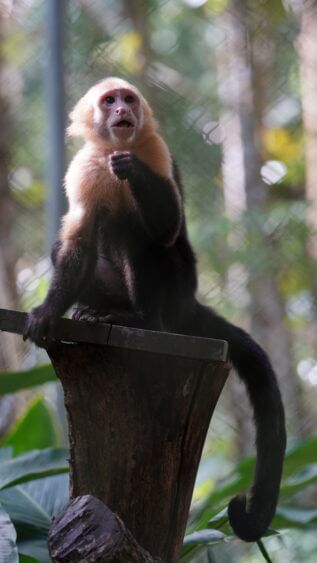

However, the possibility of releasing Ramses is a dilemma.
Changes in his behavior due to his interaction with humans have altered his ability to survive in the jungle. Reintroduction could lead him to depend on non-natural food sources, endangering his existence and the surrounding ecosystem.
Thus, Ramses remains a symbol of the complexity of conservation efforts, a reminder that sometimes human love and care can impose irrevocable limitations.
In the Natuwa sanctuary, Ramses is not just a white-faced monkey but a living testimony to the shared responsibility of protecting and preserving the incredible biodiversity surrounding us.
His story is a constant echo that the fight for nature is a labor that must be embraced by all of us so that one day, stories like his can have a different ending.





A Remarkable Improvement: The Renaissance of Ramses in His New Home.



It would be relevant to highlight that, despite his current confinement situation, Ramses has experienced a remarkable improvement in his quality of life.
Since arriving at the sanctuary, Ramses has achieved a significant weight gain, and his cage has been replaced with a much more spacious and suitable enclosure for his needs.
In contrast to his past, where he was confined in a cage intended for the transportation of dogs, his current environment reflects a noticeable improvement in his well-being.
This transformation is visually appreciable, as shown in the above photograph.


